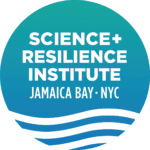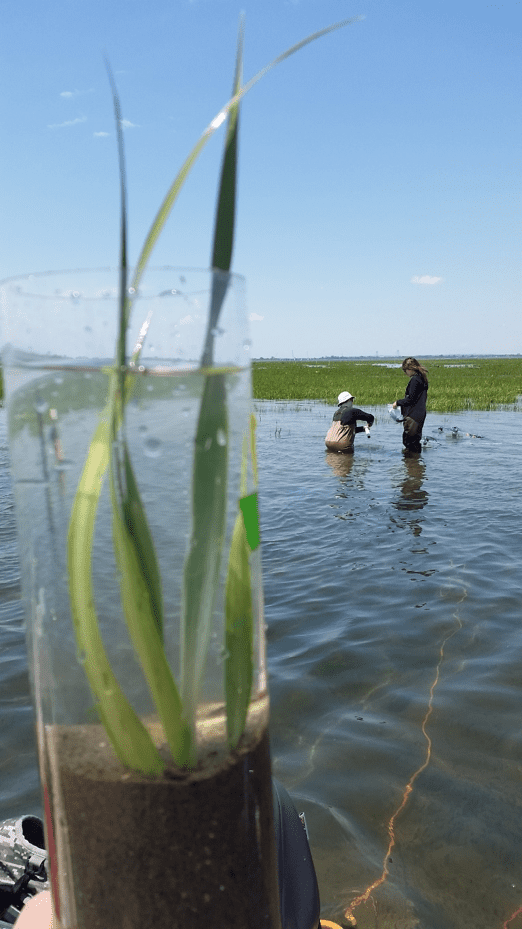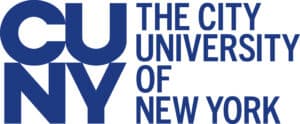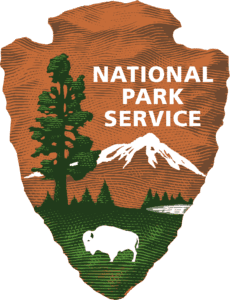In 2018, we featured a series of researchers whose work revolves around Jamaica Bay. This is an effort to coordinate and share scientific data, information, tools, and resources with our partners and networks working in Jamaica Bay and at other similar urban estuaries across the country and the world.
November 15, 2018; 12PM-1PM
- Saltmarsh change analysis of Jamaica Bay with satellite imagery
- Sediment history reconstruction in understanding the ecosystem of Jamaica Bay
Featuring:
Anthony Campbell, University of Rhode Island
Dorothy Peteet, Lamont Doherty Earth Observatory
Saltmarsh change analysis of Jamaica Bay with satellite imagery
Remote sensing is an increasingly important component of natural resource monitoring and management. This presentation will survey Jamaica Bay from a remote sensing perspective to better understand how salt marsh resources are changing and have changed over the last three decades. Worldview-2 and Quickbird imagery were utilized to classify Jamaica Bay’s salt marsh environments in 2003, 2008, 2012, and 2013. The 2012 and 2013 classifications represented pre and post-Hurricane Sandy. Time series analysis of changes in salt marsh aboveground green biomass from 1999 to 2018 was conducted with Landsat 7 and 8 imagery. This classification approach was expanded to Fire Island and Assateague Island National Seashores.
Sediment history reconstruction in understanding the ecosystem of Jamaica Bay
Worldwide, coastal marshes are facing extreme impacts, including urban encroachment, pollution, upriver dams, and sea level rise. Our research provides a method of sediment history reconstruction to understand the role of plant/animal (organic) and mineral (inorganic) matter in their growth and maintenance, including the effects of humans on the sediment burial. We present sediment core paleoclimatic and pollution data from Yellow Bar and JoCo marshes and find that, due to urbanization, these marshes have experienced a remarkable loss of mineral sediment and increase in organic sediment, significantly enhancing the risk of marsh loss with sea level rise by making them structurally weak. Future resilience depends upon active enrichment of mineral sediment in both borrow pits and marshes, ensuring the marshes outpace sea level rise, provide wildlife habitat, and retain polluted sediments beneath them.
October 18, 2018; 12PM-1PM
- Geomorphological Restoration and Resilience in Jamaica Bay, Gateway
- Evaluating marsh health and sustainability in Jamaica Bay
Featuring:
Norbert P. Psuty, Sandy Hook Cooperative Research Programs, Rutgers University
Donald R. Cahoon, U.S. Geological Survey, Patuxent Wildlife Research Center
Geomorphological Restoration and Resilience in Jamaica Bay, Gateway
Ten sites in the Jamaica Bay Unit of Gateway National Recreation Area have been monitored to track seasonal sediment budget and the vectors of morphological change post-Hurricane Sandy. The sites represent locations of well-developed dune-beach systems with modest anthropogenic impacts in a variety of exposures to ambient energies and sediment supply.
Field surveys with high-precision GPS equipment provide data to build 1D, 2D, and 3D models and to compare linear displacements, cross-section area changes, and volumetric shifts. The field data were augmented by LiDAR data sets to establish conditions pre- and immediately post-Hurricane Sandy.
The resulting metrics assist in the evaluation of current geomorphological resilience and the potential to persist through future disturbances.
Evaluating marsh health and sustainability in Jamaica Bay.
Accelerating sea-level rise and human impacts to the coast influence the accumulation of marsh sediment and soil organic matter, thereby affecting the ability of coastal wetlands to maintain an elevation consistently within the vegetation growth range. Critical components of marsh sustainability are the marsh elevation within the vegetation growth range (elevation capital) and the rates of marsh surface elevation change and relative sea-level rise.
In this presentation, the relationship among elevation capital, surface elevation change, sea-level rise, and wetland integrity (health) is examined for five salt marsh sites (including a site with elevation restored by thin-layer placement of sediment) located in the similar physical setting of Jamaica Bay. The five marshes had different levels of integrity and elevation capital, ranging from high to low. A new conceptual model describes the relationship among these biogeomorphic processes and their importance in tidal marsh sustainability
May 16, 2018; 12PM-1PM
- Sediment Transport and Budgets
Featuring:
Neil K. Ganju, U.S. Geological Survey Woods Hole & Bob Chant, Rutgers University
Sediment Transport and Budgets
Sediment provides the foundations of estuaries and embayments. Sediment amounts are typically in flux by riverine exchange, by shore erosion and accretion, by primary production, by the sea, and by weather events. Additionally, suspended-sediment is an important piece of the marsh vulnerability puzzle. Sediment deficits can lead to channel widening and marsh loss, while sediment surpluses enable the entire marsh complex to combat storms and sea-level rise. In Jamaica Bay, estimates of sediment flux into Jamaica Bay through Rockaway Inlet are made by shipboard, moored vertical profiling current meters, optical backscatter and laterally profiling instruments and in turn, numerical models are made. Results across all methods show a net input of sediment into the bay that is elevated during spring tides and during storms. Additionally, based on measurements, models made can provide insight on present and future marsh vulnerability.
April 19, 2018; 12PM-1PM
- Modeling Jamaica Bay Saltmarshes
Featuring:
Katherine Renken, Belle W. Baruch Institute for Marine and Coastal Sciences at the University of South Carolina & Hongqing Wang, U.S. Geological Survey, Wetland and Aquatic Research Center
Modeling Jamaica Bay Saltmarshes
While there is an understanding that coastal hazards, such as storms and flooding, have large impacts on coastal wetlands, it remains unclear as to what the magnitude and mechanisms of these impacts are. Researchers are using modeling methods to understand the dynamics of wetlands in response to immediate hazards such as storms, and long-term impacts like sea level rise. In this webinar, we will present two projects that are using modeling methods to forecast coastal wetlands and saltmarsh changes.
Dr. Katherine Renken will highlight a collaborative effort in modeling saltmarsh evolution and migration in four national parks in the mid- and north-Atlantic regions with the Spatial Marsh Equilibrium Model (Spatial MEM), taking site-specific inputs derived from analysis of field data (vegetation biomass, total suspended solids, and water levels) to forecast future saltmarsh surface elevation based on predicted sea-level trends.
Dr. Hongqing Wang will share his findings in researching how hurricanes and extra-tropical storms impact coastal wetland morphology. He will present the results of the Delft3D modeling integrated with field measurements on Hurricane Sandy-induced salt marsh morphological change in Jamaica Bay, New York.
March 13, 2018; 2PM-3PM:
*SPECIAL EDITION WEBINAR*
- Weather Roundtable Discussion of Recent Nor’easters Impacting New York City and Long Island
Featuring:
Nelson Vaz, National Weather Service New York, NY; Philip Orton, The Stevens Institute of Technology; Daniel Bader, Consortium for Climate Risk in the Urban Northeast
The Nor'easters of March 2018
We bring together experts in climate, weather, and forecasting to discuss the recent winter storms that impacted the U.S. Northeast. We will discuss the predictions and the forecasts made prior to the storms’ arrival, the warning, watches, and advisories that were placed in effect, and the impacts that these storms caused for coastal communities in New York and the Northeast.
March 15, 2018; 12PM-1PM
Jamaica Bay Estuarine Composition: From Nutrients to Fish
Featuring:
Bradley Peterson, Stony Brook University, and Jose Anadón, CUNY: Queens College
From nutrients to fish
Estuaries are among the most productive ecosystems in the world. Many animals rely on estuaries for food, places to breed, and migration stopovers. Estuaries are delicate ecosystems and Jamaica Bay is no exception. However Jamaica Bay has had a long history of intensive anthropogenic activity from the transformation of the coastal landscape to popularizing recreational activities such as fishing. In recent years, there have been monitoring programs and assessments to study and track the qualities and trends of Jamaica Bay. In this webinar, we will present two projects that have assessed the qualities and factors of Jamaica Bay.
1) Given the intensive land use near to the NPS, a water quality monitoring program was initiated to look at how the water quality of this coastal embayment changes over time and in response to changes in the surrounding environment. There are several factors that influence water quality in Jamaica Bay. Nutrient loading in a prominent one. Furthermore, there are potential impacts from storms on the hydrodynamics of the bay as well as changing anthropogenic activities that may influence several water quality parameters over time. During July of 2010, 2012, 2014 and 2016, water sampling was conducted at 30 locations within Jamaica Bay, New York, recorded parameters include temperature, salinity, dissolved oxygen, Chlorophyll-a, and turbidity.
2) Though they are an important recreational and provisioning resource in Jamaica Bay, the fish community of Jamaica Bay has received scant scientific attention. Fortunately, there is an untapped data source of unparalleled potential, one which contains information on more than one million fish of more than 80 species sampled at nine stations in Jamaica Bay over 30 years. With collaborations with public agencies and CUNY institutions, detailed analyses have been done on these extensive data sets, providing the first quantitative assessment of the fish community in space and time.
February 15, 2018; 12PM-1PM
Researching and tracking shorebirds in Jamaica Bay and along the U.S. Atlantic Coast
Featuring:
Pam Loring, U.S. Fish and Wildlife Service and Debra Kriensky, New York City Audubon.
Summary
In this presentation, Debra Kriensky (New York City Audubon) and Pam Loring (USFWS) will discuss their current research on tracking and monitoring shorebirds in New York City and more broadly along the Atlantic flyway. Jointly, Kriensky and Loring will present results from data collected by a bird tracking station located at Jamaica Bay Wildlife Refuge that is part of an international network, the Motus Wildlife Tracking System (www.motus.org). They will also discuss ongoing work being done to survey shorebirds during migration and the breeding season, as well as a new project aimed at tracking the movements of Semipalmated Sandpipers that stopover in Jamaica Bay.
November 16, 2017; 12PM-1PM
Health, function, and resilience of Jamaica Bay marshes
Featuring:
Philip Orton, Stevens Institute of Technology and Kirk Cochran, Stony Brook University
Summary
Salt marshes are an integral part of estuarine and coastal ecosystems and provide valuable ecological, economic, and social services. Researchers have been determining the health and assessing the ecosystem services of salt marshes in Jamaica Bay. Dr. Kirk Cochran shares his perspective of the sediment geochemistry of salt marshes in Jamaica Bay, while Dr. Philip Orton presents a brief history of the evolution of Jamaica Bay marshes and their physical benefits during storms. Both researchers’ work and findings show that sediment geochemistry and supply are integral to salt marshes and their ability to keep up with sea level rise.
October 19, 2017; 12PM-1PM
Health, function, and resilience of Jamaica Bay marshes
Featuring:
Featuring Chester Zarnoch, CUNY: Baruch College and Christopher Gobler, Stony Brook University.
Summary
Bivalve shellfish are important species in the estuary ecosystem. They are key in filtering water, creating habitat, and controlling eutrophication. Researchers have taken an interest in restoring bivalve shellfish populations and investigating the ecosystem effects of shellfish restoration efforts. In particular, they have examined their current environmental conditions to support the population, and if restoration would enhance the ecosystem service of water filtration and nitrogen removal.
The research and its results should inform future restoration and management actions in this important urban water body.
September 21, 2017; 12PM-1PM
Researching Jamaica Bay Diamondback Terrapins
Featuring:
Russell Burke, Hofstra University and Alexandra Kanonik, American Littoral Society – Northeast Chapter
Summary
The history of diamondback terrapins in Jamaica Bay is shrouded in mystery, but they were certainly an important food for native Americans and European colonists. Jamaica Bay’s terrapins are the only well-studied urban population. Nearly all we know about Jamaica Bay’s terrapins comes from studies of their nesting ecology—they nest on some of Jamaica Bay’s relatively recently created islands and shorelines. One major population nests on Ruler’s Bar Hassock, another at JFK airport, and these populations have very different characteristics despite being so close.
Researchers, students, and citizen scientists have been studying the Jamaica Bay diamondback terrapins since 1998. The project has evolved into a combination of citizen science and robust scientific investigation on the ecology of New York City’s singular terrapin population. Citizen science has increasingly become the go-to tool used by researchers for collecting important long-term data. The major goals of this work have been to understand the basic ecology of this species and identify threats to its populations while providing diverse opportunities for environmental education for local residents.
August 17, 2017; 12PM-1PM
Jamaica Bay Horseshoe Crabs
Featuring:
Matthew Sclafani, Cornell Cooperative Extension (Suffolk County) and Mark Botton, Fordham University
Summary
Having existed for more than 450 million years, a large population of horseshoe crabs lives in Jamaica Bay, an urban estuary that is characterized by armored shorelines, high nutrient loads, increased levels of pollutants, and seasonally low oxygen levels and pH. While urban estuaries present challenges for horseshoe crab survival, researchers are studying their life cycles and their ability to live in these habitats as well as integrate opportunities to involve the public in research and increase awareness of the importance of the conservation and survival of horseshoe crabs.
Matthew Sclafani has been leading the charge of the New York Horseshoe Crab Monitoring Network. The intent of this network is to encourage participants to get involved with this annual monitoring program on various New York beaches and assist with the collection of scientific data that is used to assess the status of horseshoe crabs in NY State.
Mark Botton’s research focuses on the behavior, ecology and conservation biology of horseshoe crabs. With emphasis to Jamaica Bay, Mark has been studying horseshoe crab site selection and juvenile horseshoe crab survival in this area. In particular and in partnership with various institutions, he has been investigating how beach replenishment projects impact horseshoe crab nesting-site selection.
July 20, 2017; 12PM-1PM
Microbial Communities and Functionality of Jamaica Bay
Featuring:
Nathan Morris, CUNY: York College and Mary Alldred, CUNY: Baruch College
Summary
Coastal vegetation areas such as wetlands and salt marshes are important areas for Jamaica Bay. Not only do they provide habitat for mega-fauna like birds and fish, but they also provide habitat for microbial communities. These communities are vital in providing important services such as nutrient-cycling, leading to the viability and health of these habitats. During this webinar presentation, Nathan Morris explains his research on understanding the diversity and taxonomic composition of these microbial communities, critical to nutrient cycling in estuarine sediment, while Mary Alldred describes the relationship of these communities in relation to assessing how marsh vegetation, sediment characteristics, and key processes of the nitrogen cycle develop over time following a marsh restoration. Both Morris and Alldred highlight that understanding the “micro-world” can have a large impact on the health of the large habitats and wildlife such as those that reside in Jamaica Bay.
Nathan Morris and Mary Alldred are both 2016 SRIJB Research Fellows. Learn more about their work and the SRIJB Research Fellowship.
June 15, 2017; 12PM-1PM
Jamaica Bay Landscape Vegetation Assessment
Featuring:
Helen Forgione, Natural Areas Conservancy (NAC), and Steven Handel, Rutgers University
Summary
Vegetation is crucial to the health of Jamaica Bay; it cleans and cools our air, it provides habitat for wildlife, and it helps lessen erosion. There is ongoing work to assess the types of vegetation that exist in the coastal areas of Jamaica Bay. Research has helped to identify the most vulnerable areas and also suggest ways of maintaining the vegetative fringe areas during the decades ahead. Through surveys and assessments as well as experimentation and monitoring, Helen Forgione and Steven Handel give their insights to the landscape vegetation assessment and work they and their teams have been doing in Jamaica Bay as well as prospects going into the future.
May 18, 2017; 12PM-1PM:
Jamaica Bay Historical Ecology and Change
Featuring:
Featuring Dr. Eric Sanderson, Wildlife Conservation Society (WCS) ; Dr. John Waldman, City University of New York (CUNY): Queens College.
Summary
Despite being situated in the intensely urbanized, highly populated city of New York, Jamaica Bay and its watershed have received only minimal historical attention. Recently, there has been work to assess its history and its ecology throughout the years. Through in-depth analyses of archived newspapers, old maps, historical descriptions, and geographic modelling, Dr. John Waldman and Dr. Eric Sanderson provide an interesting overview of Jamaica Bay’s historical change and ecology, how its past influenced its present conditions, and finally, its prospects going into the future.
Dr. John Waldman will provide a brief overview of what we found about the environment of Jamaica Bay in our survey of regional newspapers from about 1840-1910.
Dr. Eric Sanderson will discuss his findings about the historical dynamics of Jamaica Bay’s ecology from old maps, historical descriptions, and geographic modelling. He will briefly discuss the relevance of this work on the historical geomorphology and ecology for how we envision the ecology of Jamaica Bay in the future.
April 20, 2017; 12PM-1PM
Jamaica Bay Water Quality Data Visualization and Access Tool
Featuring:
Featuring Dr. Sandra Baptista, Center for International Earth Science Information Network (CIESIN) at Columbia University ; Dr. Brett Branco, City University of New York (CUNY): Brooklyn College.
Summary
The Jamaica Bay Water Quality Database is an interactive Web application for Jamaica Bay, New York created by the Center for International Earth Science Information Network (CIESIN) and Brooklyn College. Data were provided by Gateway National Recreation Area (Gateway) of the National Park Service (NPS) and the New York City Department of Environmental Protection (NYCDEP). The datasets were then formatted to ensure compatibility of measurement units and facilitate integration into a single database. The purpose of this database is to centralize access to water quality data in support of research, management and education that promote resilience in Jamaica Bay and the surrounding communities. The project team is identifying other water quality datasets that may be integrated into the database in the future, and planning additional information layers that contribute to understanding patterns and changes in water quality.







